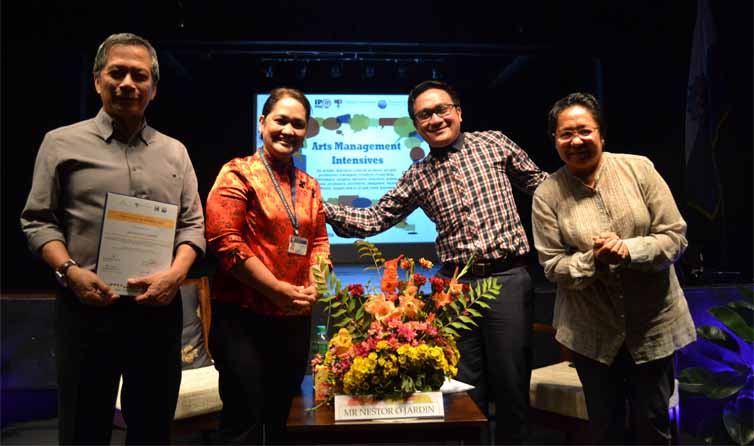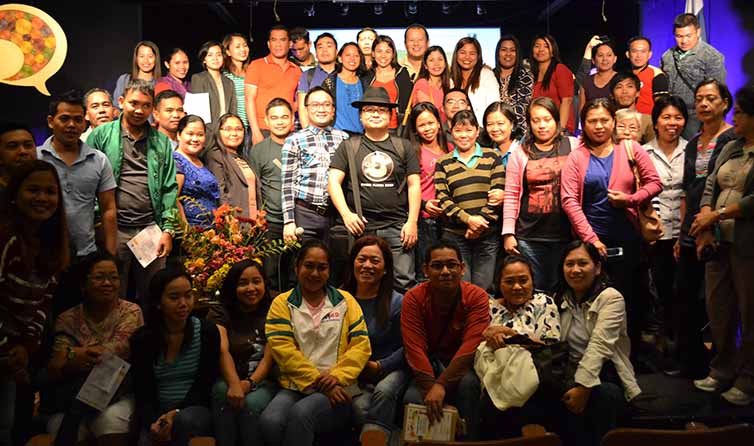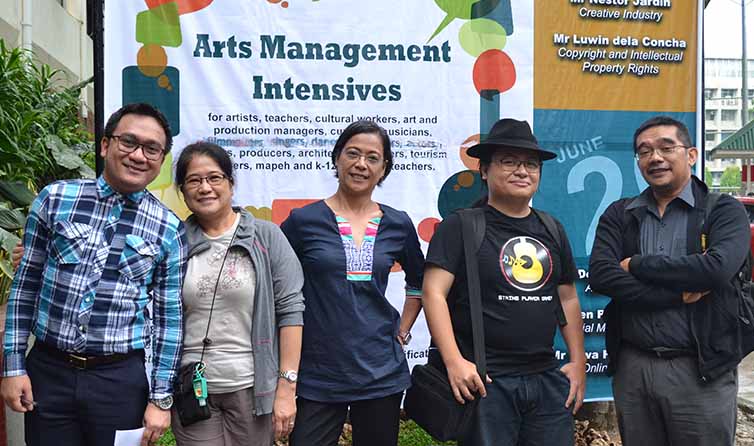
The Xavier Center for Culture and the Arts (XCCA) successfully hosted the “Arts Management Intensives” (AMI) of the Cultural Center of the Philippines (CCP) through its cultural management division - arts education department.
The two-day forum was aimed at developing deeper understanding of the various concepts of the arts and at turning participants into advocates of the creative industry who will provide value and support for its growth in the country.
Thriving arts havens
Former CCP president Nestor Jardin shared the current situation and trends in the arts industry in the Philippines and its contribution to the national economy.
He added that arts scenes across the country have been flourishing with academic institutions and young creatives taking the lead.
AMI also served as a venue to discuss the challenges being faced by arts teachers and advocates particularly in copyright and intellectual property rights in the midst of vast access to information and new media.
Luwin de la Concha of the Intellectual Property Office (IPO) discussed copyright procurement and protection of the creator of an original work.
The country’s copyright law is enshrined in Republic Act No 8293 or “The Intellectual Property Code of the Philippines” which covers original materials, trademarks and other forms of intellectual property divided into 17 classes.

On the second day of AMI, Dennis Marasigan’s talk on arts marketing sparked a lively discussion among the participants.
“As an arts marketer, you have to put yourself into your clients’ shoes. Know your needs. What do I want? What do I want to experience?” said Marasigan whose journey in the arts marketing began in 1994 when he became CCP head of theater operations.
What is best to keep in mind when doing marketing, Marasigan said, is that, “There is always a need for a better product. You need to research on how you can give your customers the satisfaction they are looking for.”
In his study of audience development, Marasigan came up with three main factors which influence audience turnout at a certain show or exhibit: “Sino ang kasali? (Who are in that show?) Tungkol saan? (What is the show about?) How much will it cost me — physically, financially and emotionally?”
So what are Marasigan’s ingredients for arts marketing? “A systematic marketing process must include an assessment of one’s product, pricing strategy, place decisions (product availability and distribution platforms), positioning or branding, and people.” He calls it simply as “5Ps.”

In the advent of technology, why not use online platforms to market arts programs? This was the zenith of the last two discussions at AMI — social media marketing and online platforms.
Manila-based composer, arranger and musician Diwa de Leon presented the various online portals where artists can upload and promote their talents as well as connect with fellow artists and organizations.
Moreover, multi-awarded Integrated Performing Arts Guild (IPAG) founder and artistic director Dr Steven “Tibo” Fernandez shared how IPAG has been using the Internet to showcase their dance and theater craft, and foster partnerships with other arts institutions across the world.
“We posted our shows on the IPAG website during the 1990s, and that’s how we got invited to perform in different cities around the globe,” Fernandez recounted.
A leading Philippine dance and theater company whose world-acclaimed productions integrate the dance, music, arts and traditions of Mindanao, IPAG has represented the country in over 100 cities worldwide.
“Now, IPAG uses Facebook to post information and invites to our shows, and now you can get immediate responses—likes, shares and comments. The posts have to be brief and direct to the point because you have to take note of your audience’s attention span.”
Fernandez jestingly said that if one wants to dissect someone’s personality, “Study their posts on FB!”
He added that arts companies can use social networking sites for crowdsourcing and knowing their audience better with web analytics like the “Insights” feature on Facebook.
Online posts, Fernandez said, have now become the “electronic word of mouth.”
Speed is a major advantage of social media but, at the same time, a looming disadvantage. As Fernandez put it, “When your audience like it, they will immediately post positive reviews on Facebook. But if not, their posts about how bad the show was will go viral.”
AMI, held on June 25-26 at XU Little Theater (XULT), drew about 100 participants, mostly artists and teachers of Humanities, Special Program for the Arts (SPA), MAPEH and K to 12 arts track.
After the positive and warm reception at XU, XCCA hopes to continue engagements such as the AMI to fortify its mission to be the center of arts program development and cultural education, and build a network of arts advocates in this part of the country.